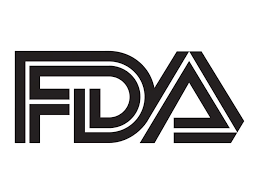Article
FDA Approves Varenicline Nasal Spray for Dry Eye Disease
Author(s):
The novel method of administration is a first of its kind for the common chronic eye condition.

The US Food and Drug Administration (FDA) has approved varenicline solution (TYRVAYA Nasal Spray 0.03 mg) for the treatment of dry eye disease symptoms.
The indication granted to Oyster Point Pharma makes varenicline solution the first nasal spray approved for treating patients with dry eye disease, a chronic condition that currently affects nearly 40 million Americans.
Varenicline, a twice-daily selective cholinergic agonist nasal spray, was evidenced for its benefit in mild, moderate or severe dry eye disease in a trio of clinical trials involving 1000-plus patients: ONSET-1, ONSET-2, and MYSTIC. In the first 2 trials, three-fourths (74%) of patients were female and mean age was 61 years old. Patients reported a baseline anesthetized Schirmer’s score of 5.1 mm and a mean baseline eye dryness (EDS) score of 59.3.
Investigators measured basal tear production by change from baseline in anesthetized Schirmer’s score using a test that wicks tears and measures tear volume with calibrated filter paper. They additionally assessed eye dryness by change from baseline in EDS.
Patients treated with varenicline showed statistically significant improvements in tear film production at Week 4, with 52% and 47% achieving ≥10 mm increase in Schirmer’s score baseline in ONSET-1 and ONSET-2, respectively. Comparatively, just 14% and 28% of patients given vehicle treatment achieved that endpoint in each trial, respectively (P < .01).
The treated patients in ONSET-1 and ONSET-2 additionally reported 11.7 mm and 11.3 mm mean improvements in Schirmer’s score at week 4, respectively, versus 3.2 mm and 6.3 mm among vehicle-treated patients.
Mean improvement in EDS from baseline to week 4 was 18.9 mm and 19.8 mm in patients treated with varenicline in ONSET-1 and ONSET-2, respectively, versus 5.4 mm and 15.4 mm in patients treated with vehicle.
The most commonly reported adverse reaction to varenicline was sneezing, among 82% of patients. Another small portion of patients (≤5%) reported cough, throat irritation, and nose irritation.
Jeffrey Nau, PhD, MMS, president and chief executive officer of Oyster Point called the approval a “milestone for patients and eye care professionals,” highlighting the unique route of administration.
“In any therapeutic area, it’s always an exciting moment when you follow the science and develop a truly innovative pharmaceutical treatment option for patients that addresses an important unmet medical need,” Nau said in a statement. “In conjunction with the FDA, it has been an honor to work alongside my colleagues at Oyster Point to bring TYRVAYA Nasal Spray to the dry eye disease community.”





